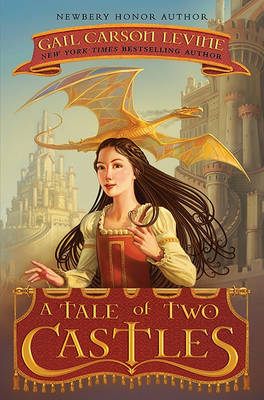Reviewed by Briana @ Pages Unbound on
The flaws of the book begin with Elodie’s age. (She is twelve.) It is difficult to complain that she is too skilled or having too many adventures for one her age because that is simply a characteristic of books written for younger readers. The protagonists are their age so they can relate and they need to do something or there would be no story. However, Elodie repeatedly tells strangers she is fourteen, and her insistence gives the impression that is how old Levine wishes she really were. Elodie also develops a crush on a character who is distinctly stated as being around the age of eighteen—much too old for Elodie. All of this probably is not Levine’s fault, but rather the result of one major bookseller’s insistence on stocking books with protagonists thirteen or older in the teen section regardless of the intended audience. Nonetheless, it is an annoyance since her age seems stuck somewhere in limbo.
Levine has also decided that, in her world, the gender of a dragon is known only to a dragon itself. This raises a question or two, but the real problem is the convention of calling a dragon IT. Not it or It, but IT. Every time the dragon makes an appearance, the reader is tempted to read about IT in a voice that sounds like a shout. Because the dragon is a prominent character, the only way to prevent frequent shouting from interrupting the flow of the story is to see the word coming and deliberately gloss over it; this makes reading the book somewhat more of an effort than it should be. Her word choice also brings to mind A Wrinkle in Time (particularly since the two books are directed toward a similar audience), which makes reading about IT even stranger because the two ITs are nothing alike at all.
A few other details suggest that Levine may have been trying just a tad too hard to make her world unique—things related to language and custom and so forth—but a list will be omitted to prevent these details from annoying readers who might not otherwise have been bothered by them. Overall, however, she does do a good job of portraying a medieval-esque world that has its own identity—which is not something many authors who adapt the time period can claim. A Tale of Two Castles, in spite of its few glaring and easily fixable flaws, is a very good story.
Reading updates
- Started reading
- 1 August, 2011: Finished reading
- 1 August, 2011: Reviewed
